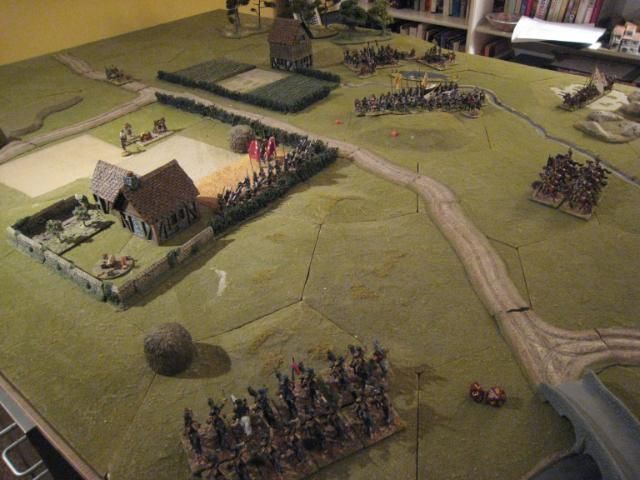
The 17th Foot began life in 1688 as Richard's Regiment of Foot. It was stationed in Flanders and Ireland before taking part in the War of the Spanish Succession. It was designated the 17th Regiment of Foot in 1751 and participated in the French & Indian Wars, being present at Louisburg in 1758 and Ticonderoga in 1759. After service in the West Indies and Pontiac's Rebellion the battalion returned to England in 1767. Nine years later it arrived in Boston and fought at Long Island, Monmouth and Princeton. The regiment suffered defeat in July 1779 at the capture of Stony Point, which was garrisoned by men from the 17th and 71st regiments. It is thought that the regiment lost its colours at this battle. The regiment also suffering the indignity of surrender at Yorktown.
The 17th Foot is an infrequent visitor to the published "British Grenadier!" scenarios - it has a strength of 12 figures for Germantown and 16 for Long island and the early Monmouth game in the second scenario book. There are more obvious gaps in my British line collection, such as the 15th, 64th and 37th which are all mainstays of the larger 1777/78 battles. But I wanted to paint an infantry battalion that provided an opportunity for some creativity in respect of the soldiers' backpack motif. As I've noted before, there are various ways in which you can paint the flap on a backpack. I usually paint the flap in a reddish brown colour and then add a circle in the facing colour in which I paint the regimental number (like for the recent 63rd). The 17th is the first of a pair of regiments which I think afford more individual treatment to the backpacks. The motif used here, which is supposed to be a laurel wreath enclosing the regimental number, was inspired by the design of the flags for this regiment as shown on the Fife and Drum website. I'm not sure where this design comes from - GMB's flags do not have this wreath. Fife and Drum suggests that the wreath was added to the colours in recognition of the regiment's contribution at Princeton (!) and I have seen this at other places. That means that the motif post-dates 1777. However, whilst accepting that this treatment of the backpacks has no basis in fact or history I think it's worth doing if only to add some variety.
The dog comes with the command pack (these are all Perry figures). I painted it as a labrador/golden retriever cross, modelled on my parents' late pet Lucy. This is a lovely little model - one imagines that Alan Perry's inspiration for it may have been Gainsborough's painting of an officer in the 4th Foot. This painting gives you another colour scheme for the pooch. Rather than have the dog looking up at his officer owner as in the painting I decided to have him growling at the battalion's drummer.
16 figures. Painted October 2009.
















